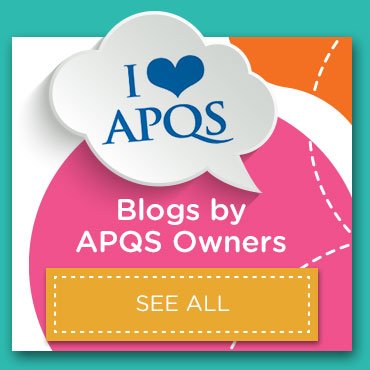Understanding how longarm computer systems work: A closer look at Quilt Path
Quilt Path is an advanced longarm computer system that transforms your quilting process by providing precision and creative control. In this guide, we’ll explore the mechanics behind how Quilt Path operates, focusing on its dual-belt system, the functionality of its X and Y axes, the innovative design of the new Quilt Path carriage, and the tablet that comes with the system.
The basics of Quilt Path’s movement system
Quilt Path relies on two key belts to control the movement of your APQS longarm:
- X-Axis (Left-Right Movement)
- Y-Axis (Front-Back Movement)
Understanding how these belts work together will help you optimize your quilting setup and make the most of your Quilt Path system. Don’t worry—we’ll keep it simple and fun, promise!
The X-axis: Left-right movement
- Single run belt system: Think of this belt like a mini highway running straight along your quilting table. The X-axis belt lets your machine glide left to right smoothly.
- Motor magic: The motor crawls along this belt, giving your machine precise, controlled movement.
- Taking the pressure off: There’s a nifty feature that lets the system track your quilting head without putting pressure on the drive pulley. This comes in super handy when you’re adding points to create “keep in” or “keep out” regions. Yep, it’s as cool as it sounds.
The Y-axis: Front-back movement
- Belt loop system: The Y-axis has a continuous belt loop tucked neatly inside the C-channel at the bottom of your Quilt Path carriage. Think of it like a conveyor belt for front-to-back motion.
- Clamping 101: Near the middle of your sewing head, there’s an important little clamp. To move your machine front-to-back, you need to clip this clamp onto the top of the Y-axis belt loop. No clamp = no quilting motion. It’s that simple.
The new Quilt Path carriage design
Here’s where things get exciting. The new Quilt Path carriage is a total game-changer:
Left-side parking perks
The carriage now sits on the left side of your APQS longarm. Want to switch to free-motion quilting? Just park the carriage on the left, and voila! None of Quilt Path’s weight is in your way. It’s like having an assistant who knows when to step aside.
Quick transitions
Moving between computerized and free-motion quilting is as easy as:
- Slide the Quilt Path system to the left.
- Head to the back and unplug the red cable from the AUX port.

3. Release the red handle.

4. Unclamp the Y-axis clamp.

5. Slide your longarm away from the carriage—easy-peasy.
Switching back? No Problem:
- Glide your longarm back over to the carriage.
- Engage both clamps.
- Plug the red cable back in.
You’re ready to quilt with Quilt Path again in no time.
The Quilt Path tablet
Let’s talk tech. The Windows-based tablet that comes with your APQS Quilt Path is more than just a screen—it’s your quilting command center.
- Preinstalled and ready to roll: Quilt Path comes preloaded, so you can jump straight into quilting without fussing with downloads.
- Bonus goodies: Inside the tablet (and on the included flash drive), you’ll find:
- A handy PDF manual on using Quilt Path like a pro.
- 500 bonus designs to spark your creativity and kickstart your projects.
Consider it your digital quilting toolbox, packed and ready to go.
Optimizing Quilt Path performance
Understanding the nuts and bolts of your Quilt Path helps you:
- Keep things smooth: Check belt tension and alignment regularly.
- Quilt with precision: Use the tracking feature when adding detailed design points.
- Maintain like a pro: Give those clamps and belts a quick inspection now and then. A little TLC goes a long way.
Troubleshooting tip: When safe area won’t set
Running into the dreaded “Safe Area Cannot be Set” message? Don’t panic—this one’s an easy fix.
Most of the time, the culprit is simple: check your Y-axis clamp! Yep, it’s usually just that. Think of it like Quilt Path giving you a friendly nudge: “Hey, did you forget to clamp me in?” Make sure the Y-axis clamp is properly secured, and you should be good to go.
What’s next in the Quilt Path blog series?
Now that you’re familiar with how Quilt Path works, it’s time to dive into using it for your next quilting masterpiece. Here’s a sneak peek at what’s coming up:
- How to do an edge-to-edge pantograph: Perfect for beginners and a great way to cover a quilt beautifully.
- Keeping a panto inside your pieced borders: Learn tricks to keep your designs neat and tidy.
- Border treatments: Get creative with unique border designs.
- The awesomeness of the repair pattern feature: Spoiler alert: It’s a total lifesaver.
- Advanced techniques: From keeping designs inside specific areas to fancy “keep out” tricks, we’ve got you covered.
Stick with us, and you’ll be a Quilt Path pro in no time.
Conclusion
With a solid understanding of Quilt Path’s dual-belt system, smart carriage design, and tech-savvy tablet, you’re well on your way to quilting with confidence. Whether you’re tackling edge-to-edge designs or custom masterpieces, Quilt Path makes the process smooth, fun, and precise.
Need more tips? Check out your Quilt Path manual, join the APQS community Quilt Path Central on Facebook, or reach out for help anytime.
Happy quilting!








Looking forward to learning more!!